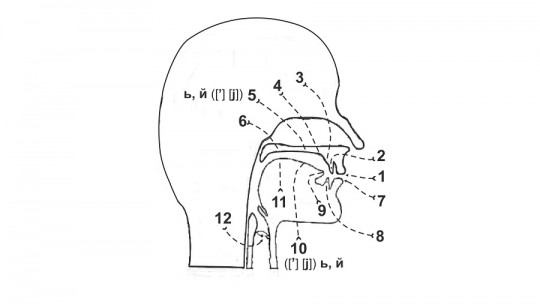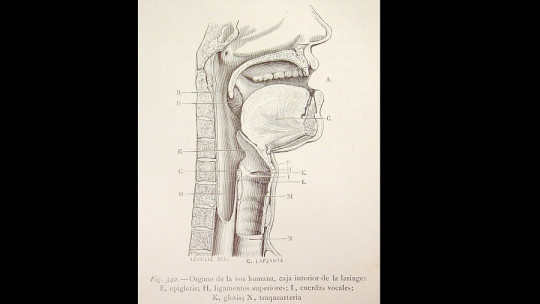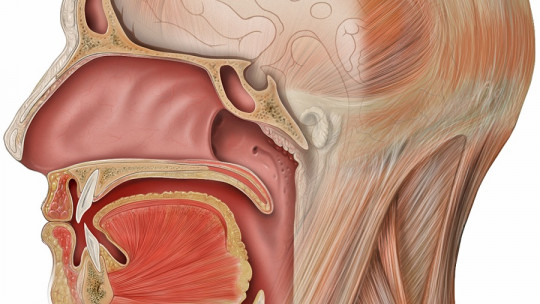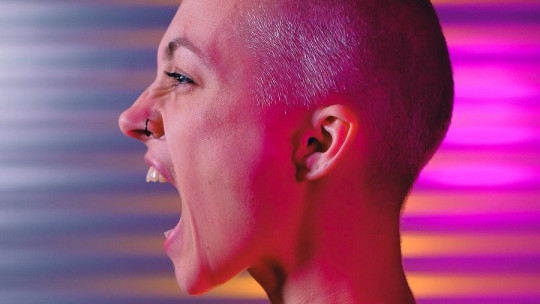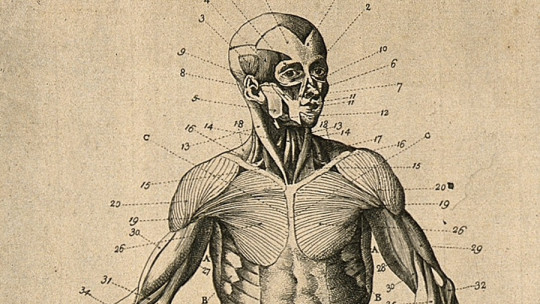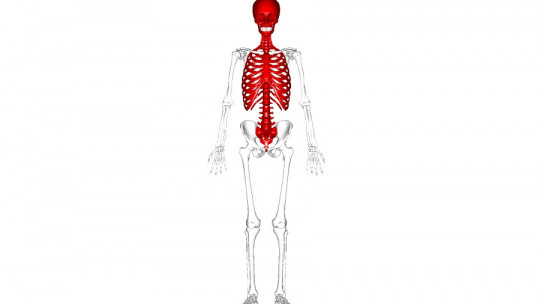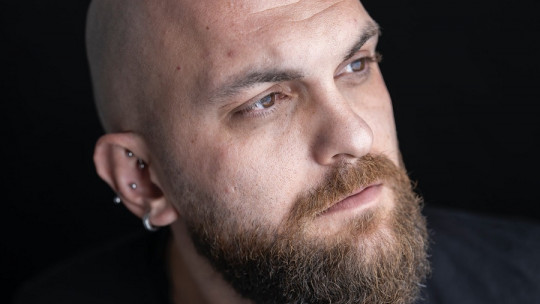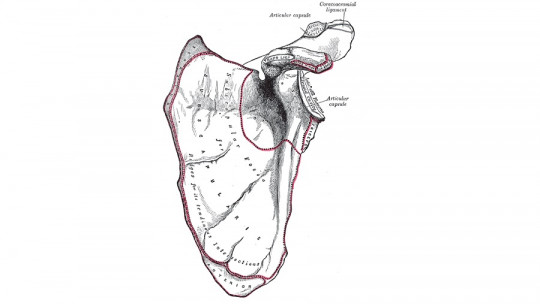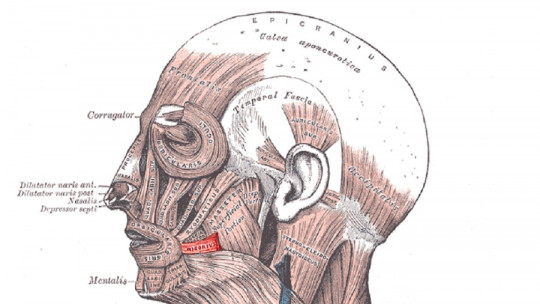
You may be familiar with the 55-38-7 rule, known professionally as the “Mehrabian rule.” According to the postulation made by emeritus professor of psychology Albert Mehrabian, 55% of communication in human beings falls on body language, 38% on the use of voice and only 7% of the communicative potential is due to content. of the very words we articulate.
This proposition (if true) shows that, no matter how “advanced” we are evolutionarily, much of our behavior continues to be conditioned by instincts inherited from our ancestors. Without a doubt, an image communicates more than a thousand words.
Based on this very interesting premise, today we tell you everything about a very small muscular structure, but with impressive functionality from a communicative point of view in humans. Keep reading, because here you will find all the relevant information about the risorius muscle
What is the risori muscle?
The risori muscle is a skeletal muscular structure (striated) found on both sides of the face, small in size and triangular in shape Before continuing to name the physiological characteristics of this muscle, we must lay certain foundations as far as the muscular system is concerned.
The human body has more than 600 muscles. These perform every function imaginable, from pumping blood in the heart to allowing us to lift a heavy item at work. In any case, if we refer to the muscular system, we are only encompassing those muscles that can be contracted voluntarily by the body, that is, the skeletal or striated muscles.
Smooth muscles (which line the digestive tract, for example) and cardiac muscles would be left out of this definition, since their contractions and distensions are involuntary and do not occur with a conscious purpose. As you can imagine, the risorius muscle It is within the category of striated muscles, since we can contract it at will in order to gesture
Origin of the risory muscle
The risorius muscle, together with the arterial conglomerate that nourishes it, derives from the second pharyngeal arch of the mesoderm (layer located between the endoderm and ectoderm), which is formed approximately in week 4 of gestation of the fetus.
For its part, The innervation of this muscle derives from the neural crest cells These cells (CCN) are defined as a totipotent cell population originating from the dorsal portion of the neural tube, from where they migrate through the developing organism to give rise to a wide variety of structures.
Furthermore, it should be noted that it has been postulated that the risorium is an exclusive muscle of hominins, that is, a subfamily of primates included in the Hominidae family. Thus, it is believed that only gorillas, chimpanzees and humans have the ability to smile mediated by this muscular structure. Without a doubt, this data further demonstrates the phylogenetic closeness with our primate relatives.
Structure and function
As we have said, the risorius muscle is found on both sides of the face, it is small and has a triangular shape. It is located on the superficial plane of the face, on each side of the cheeks, close to the upper and lower jaw bones. It is inserted into the skin at the corner of the mouth, so its simultaneous contraction allows us to smile, among other expressions of joy.
In any case, it is striking to know that, By itself, the risorius muscle generates a “false smile,” since it does not involve the skin around the eyes Compared to a real smile, this elevates the corners of the mouth, along with the zygomaticus major and minor, among other muscular structures. The smile is a truly complex gesture reserved for a few living beings, since no more and no less than 12 muscles participate in it.
Vascularization and innervation
The risorius muscle receives the blood necessary to nourish its cells from the facial artery, which originates in the external carotid and communicates with the structures of the superficial part of the face, such as the muscle that concerns us here. The transverse artery of the face also participates in its irrigation On the other hand, the facial and transverse veins drain deoxygenated blood from the risorium, which ends up flowing into the jugular veins.
Moving to the nervous system, and like all the musculature involved in facial expression, The risorium is innervated by cranial nerve VII, also known as the facial nerve This is the somatic motor nerve of the cutaneous muscles of the face and neck, which allows us to make multiple movements and gestures to interact with each other and with the three-dimensional environment that surrounds us.
Do we all have risori muscle?
Although the answer may surprise you, the risorius muscle presents an important physiological variety between individuals. Without going any further, an investigation studied the shape and location of the risorium in 18 Caucasian corpses and the results were surprising.
7 of them did not have a direct risory, 2 showed inconclusive results and only 4 presented a completely symmetrical structure Thus, it is considered that the risorium presents variety in terms of bilateral symmetry, asymmetry and presence or absence.
The importance of the risario in society
In general, we use about 12 muscles to smile, although this number can depend on various factors and the emotion we are trying to communicate. Some of those involved in almost all cases are the following: the levator anguli oris muscle, the upper lip muscle, the orbicularis oculi, the risorium, the zygomaticus major and the zygomaticus minor.
Laughter and smile have historically been considered signs of joy, well-being and pleasure at both individual and social levels These forms of communication help us quickly manifest an optimal state of mind, but, however, their physical relationship does not always have to do with positive emotional issues. There are 3 main types of smile:
Besides, In the rest of hominins, the smile does not always imply complicity In other primates, showing a closed mouth with teeth stuck together is a gesture primarily of submission, so it is speculated that the “goodness” that we have attributed in modern society to smiling derives, in part, from this primitive interaction of our ancestors. .
On the other hand, if a primate curls its lips and has space between its teeth, that “smile” indicates that an attack is going to occur soon. The animal is preparing its oral structure to bite its possible threat, and thus get rid of the danger. All of these gestures are found in the genetic machinery of primates, since they are not learned over time based on the observation of adult individuals.
For example, you will be surprised to know that A blind child who has never seen a smile will do so under the same circumstances and in the same way as a person without any visual impairment The risorium and the rest of the muscles involved in this gesture act in a primitive and unlearned way: smiling is in our genetic code.
Summary
Who was going to tell us that such a small and apparently anecdotal muscle was going to give us so much to talk about? Although the laugh alone does not cause the appearance of a smile, it is an important element in this gestural mechanism that is so essential in today’s society.
Without going any further, it is estimated that adult human beings smile an average of 25 times a day, depending on the number of social interactions that occur to the individual. This gesture can be sincere, cordial, ironic or fake, but the most important thing is that it expresses much more than a string of words in a few seconds.

